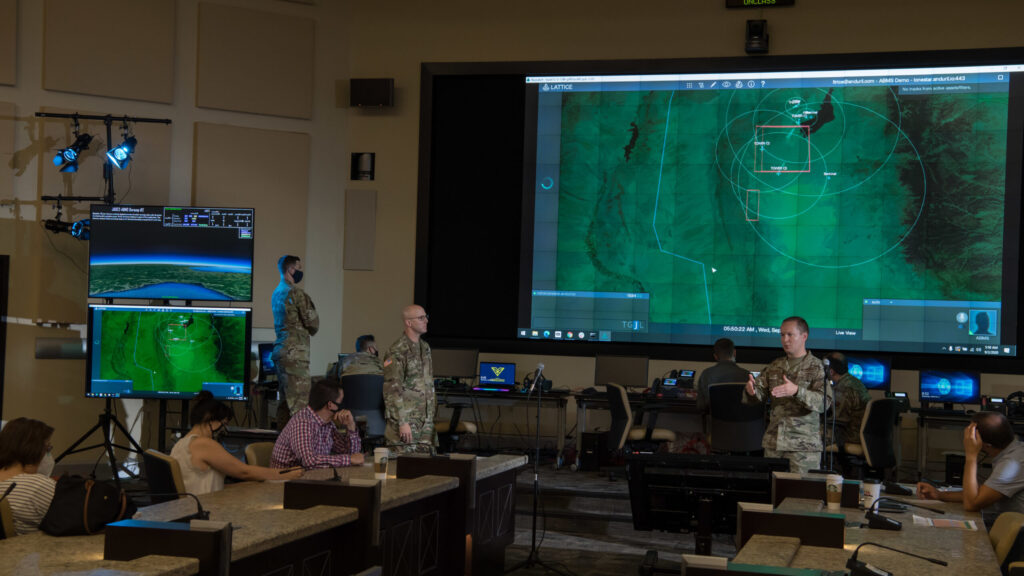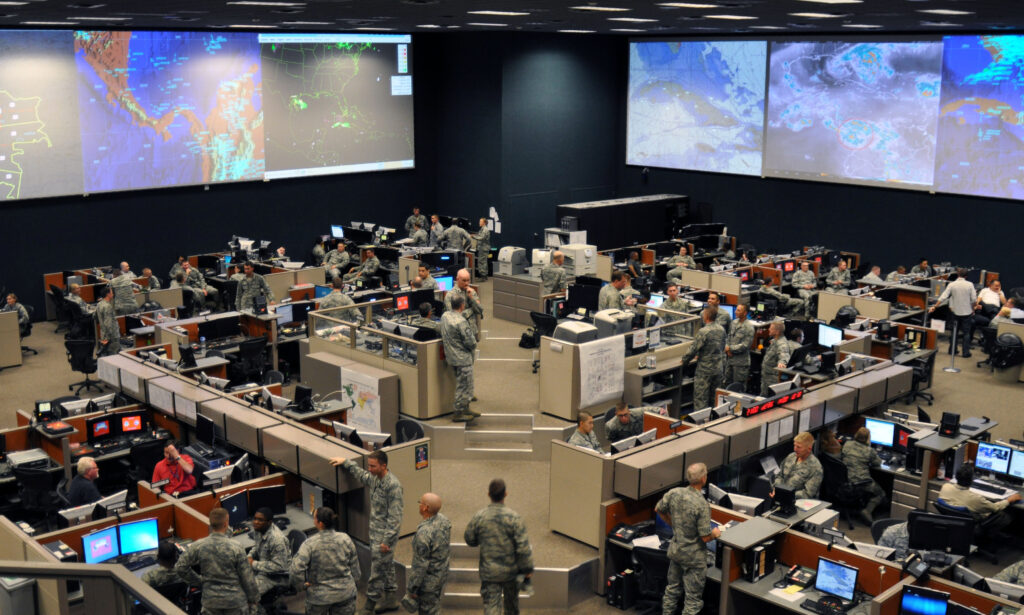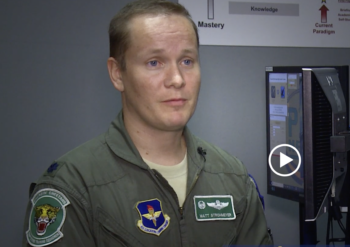SYDNEY J. FREEDBERG JR.

Then-Lt. Col. Matt Strohmeyer briefs reporters on an Advanced Battle Management System (ABMS) experiment in 2020. (U.S. Air Force photo by Senior Airman Daniel Hernandez)
WASHINGTON — This week, after a year-plus hiatus in high-tech exercises in high-speed data sharing, the Pentagon kicked off a new Global Information Dominance Experiment. Building on GIDEs I through IV in 2021, GIDE V, running Monday through Thursday, is the first of a new series of four, even more intensive exercises that will run this year, the Pentagon’s Chief Digital & Artificial Intelligence Officer announced.
Everyone who’s anyone is coming to this party: “Our experimentation teams are comprised of military and civilian leaders from across all service branches, all eleven combatant commands, technology vendors and international allies,” the exercise commander, Col. Matthew Strohmeyer, told Breaking Defense via email. “This is the first time the DoD has conducted an event of this high level of authority, and at this scale.”
Why does this matter? Because the US military HQs aren’t nearly as high-tech as people think they are, and that’s a problem the Pentagon is eager to solve.
Pop culture imagines military command posts as high-tech temples, full of glowing screens that give the generals a real-time god’s-eye view, like in the 1980s smash hit Wargames. Reality is more prosaic, more like The Office if they sometimes bombed a hospital by mistake. In many cases, staff officers must retype reams of numbers into spreadsheets or scrawl them on sticky notes, because different networks can’t share data directly. A lot of potentially useful information is ignored for sheer lack of time to look at it.
When NORAD and NORTHCOM ran the original GIDE exercises in 2021, the dual-hatted head of both commands told reporters, “What we found is about 98 percent of the data and information [from our early-warning radars] was not being actually analyzed or assessed.”

12th Air Force Combined Air Operations Center (CAOC).
So the goal of GIDE — and the larger Pentagon project it will inform, Joint All Domain Command & Control — is to pool all the data, automate the data sharing, and even use artificial intelligence for the first-pass analysis: Look, humans, here are transports being loaded in Chinese seaports close to Taiwan, or North Korean missiles being rolled out of their caves and fueled for launch, or hate-fulled Tweets stirring up mobs to storm an embassy. That way you not only spare the human beings hours of poring over satellite images, radar returns, and social media posts, you actually give them time to think.
The big difference between the first four GIDEs, in 2021, and the relaunch now underway is the host. The original was run, although not funded, by NORAD and NORTHCOM, operational commands both run by Gen. Glen D. VanHerck, with an assist from the Pentagon’s centralized Joint Artificial Intelligence Center. The 2023 series is led by the Pentagon’s Chief Digital & AI Officer, Craig Martell — whose office absorbed both the Joint AI Center and other DoD big-data efforts — “in partnership” with the Joint Chiefs of Staff themselves. (JCS already supported the original GIDE series, but not as prominently.) Martell was challenged with “reintroducing and reinvigorating” the series, the Pentagon announcement said.

Then-Lt. Col. Matt “Nomad” Strohmeyer in 2018 (screencap of Air Force video)
A crucial common thread between both series: They’re both run by Col. Strohmeyer. A former F-15E fighter jock with the callsign “Nomad,” the Air Force officer attended the Army’s prestigious School of Advanced Military Studies, whose graduates are nicknamed, with a mixture of respect and envy, the “Jedi knights.” He then worked at Pacific Air Force headquarters in Hawaii, the civilian Center for Strategic & International Studies in DC, and Air Force HQ in the Pentagon. Breaking Defense interviewed Strohmeyer in-depth about the original GIDE series back in 2021.
GIDEs V through VIII will be a series of “increasingly complex demonstrations” throughout 2023, he said this time around, using both commercial and military-specific technologies to pool data across the armed forces, host it on cloud servers, pick out telltale patterns with machine learning, and provide rapid-fire analysis to commanders and decision-makers across the Department of Defense.
The method involves “stress-testing current systems and processes” and infusing new technology across a variety of high-stakes missions “including [precision] fires, logistics, non-combatant evacuation operations, and” — the big one to end all big ones — “nuclear command and control.” The goal is to provide earlier warning of threats so leaders have more time to made good decisions proactively, instead of reactively chasing after the crisis.
“We want to rapidly improve access to data across the joint force — from the strategic level to our tactical warfighters,” said the CDAO, Craig Martell, in his announcement.
That’s a crucial combat task in an era where big data is a big advantage everywhere from boardrooms to battlefields.
No comments:
Post a Comment